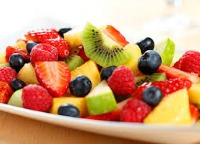So, you're trying to get healthier and you're probably paying closer attention to what you eat.
Most people know the basics. They know that they should buy more fresh fruits and vegetables.
They start buying more lean proteins too. They also try to cut out processed foods, but if you’re like most people, you still buy some packaged goods.
If you're taking the time to read the labels on the food you buy, that’s great! But you have to do more than just read them.
You have to understand what they say.
Many companies label their foods in a misleading way. The more you understand what labels really mean, the better you'll be able to make healthy choices.
9 Tricks Brands Use to Label Ingredients
1. All Natural – This phrase has almost no meaning but it is used all the time. When you buy it you think that it means that it hasn’t been changed.
All it really means is that there have been no “synthetic substances,” artificial flavoring or colors added. The food may still have salt or other ingredients added, including high fructose corn syrup.
2. Multigrain – Many people think that multigrain is the same as whole grain, but it is not. Whole grains have more fiber and nutrition. Look for foods marked whole grain.
With the above being said, you still want to avoid wheat and whole wheat so you aren't wreaking havoc on your body with gluten.
3. No sugar added – Foods don’t need to have sugar added to contain too much sugar. Any food that has natural sugars can raise your blood sugar. It can also have artificial sweeteners or carbohydrates added.
Read the label to see how much sugar and carbs a portion of food contains.
4. Sugar-free – Do not be fooled into thinking that foods that are sugar-free have no calories. They still contain fats and carbs.
Something else to consider is that foods that contain substitutes for sugar may cause stomach upset.
5. Zero trans-fat – Though it's good to eliminate trans-fat foods, you need to know that a food label can say that it has zero trans-fat and still contain up to 0.5 grams per serving.
Read the labels to see if that food has shortening or hydrogenated oils included in their ingredients.
6. Free range – We've all heard that “free range” chickens have more nutrients than caged chickens. But “free range” doesn't always mean what you think it does.
There are no rules to say how much time an animal spends out of a cage to be called “free range.” All it means is that they have some outdoor exposure.
Tweet7. Fat-free – Just like with sugar-free foods, don’t make the mistake of thinking that a food that is free of fat won’t make you gain weight. It can have lots of sugar and other chemicals that help you feel satiated when the fat is missing.
8. Light – Have you ever bought food that is marked “lite” and thought that it was better for you?
Unfortunately, food makers are allowed to use that term to describe the flavor. The only way to be sure is to read the nutritional information on the label.
9. 100% Ingredient- For example, the front of the container may say clearly “100% cacao” but when you flip over to read the label the ingredients list will tell a different story and the first ingredient listed there will be cocoa.
Never take labeling on box fronts at face value.
Yours in health,
Danette
P.S. Please share to get the word out and I always love reading your comments below.





